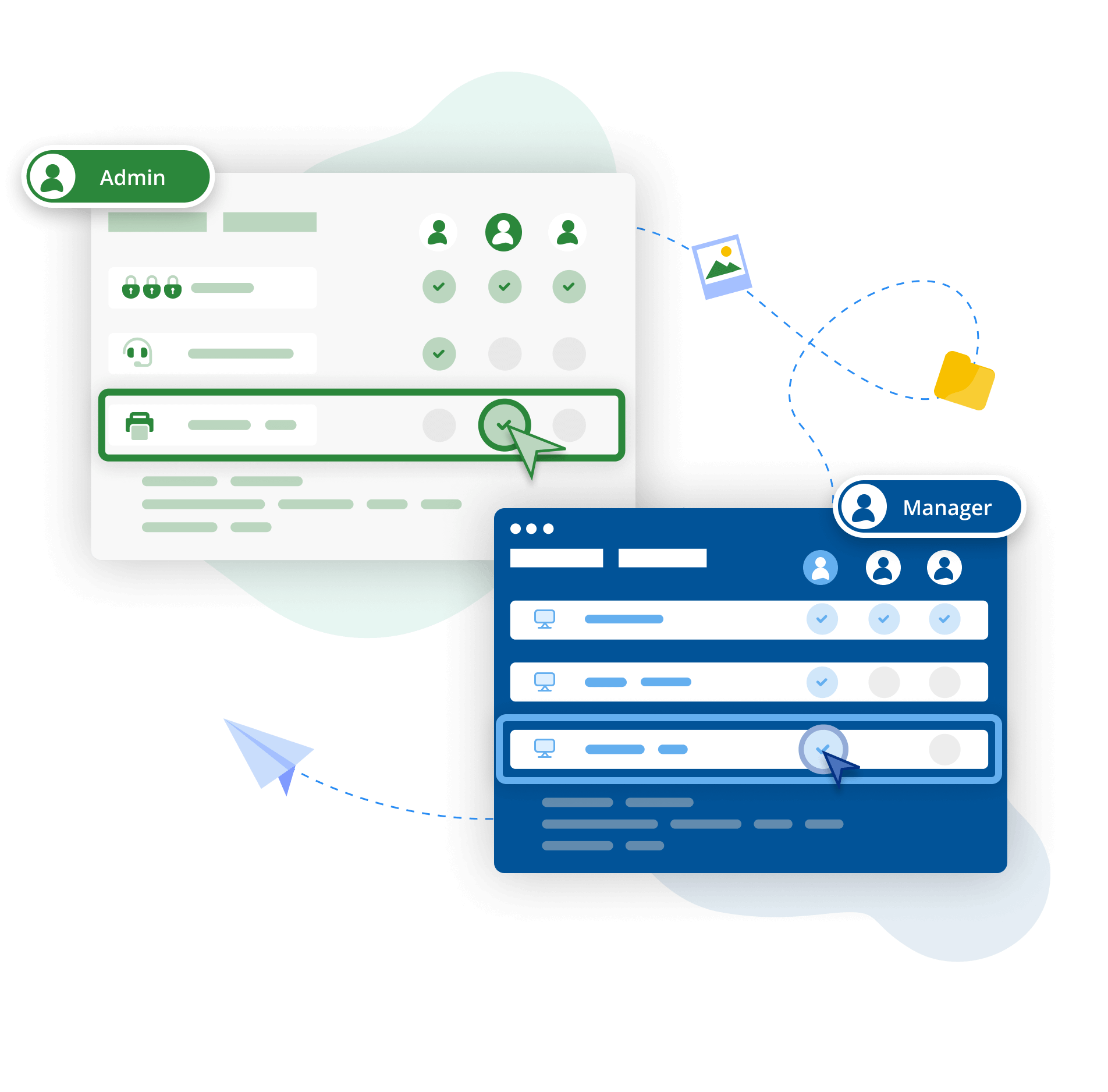How To Safely Access Remote IoT Devices: Your Ultimate Guide
Imagine this: You're chilling at home, sipping your coffee, while your smart thermostat adjusts the temperature automatically, and your security camera keeps an eye on your front door. But what if you want to control these devices from afar? Accessing remote IoT devices has become a necessity in today’s connected world. Whether it’s for convenience or monitoring purposes, understanding how to do it securely is crucial.
Nowadays, the Internet of Things (IoT) isn’t just a buzzword—it’s a reality that’s shaping how we live, work, and play. From smart home appliances to industrial sensors, IoT devices are everywhere. But here’s the catch: accessing them remotely comes with its own set of challenges. Security breaches, data leaks, and unauthorized access are real concerns that need addressing.
In this guide, we’ll break down everything you need to know about accessing remote IoT devices. We’ll cover the basics, security tips, tools you can use, and even some cool tricks to make your life easier. So, grab a snack, sit back, and let’s dive into the world of remote IoT access!
Table of Contents:
- What is IoT?
- Why Access Remote IoT Devices?
- Security Risks in Remote IoT Access
- Best Practices for Secure Remote Access
- Tools You Need for Remote IoT Access
- Step-by-Step Guide to Accessing Remote IoT Devices
- Common Mistakes to Avoid
- Future Trends in IoT Remote Access
- Real-World Examples of Remote IoT Access
- Final Thoughts
What is IoT Anyway?
Before we get into the nitty-gritty of remote IoT access, let’s take a step back and talk about what IoT actually is. IoT stands for Internet of Things, and it refers to the network of physical devices embedded with sensors, software, and connectivity that allow them to exchange data. Think of your smart fridge, fitness tracker, or even your car—it’s all part of the IoT ecosystem.
Here’s the kicker: IoT isn’t limited to consumer gadgets. Industries like healthcare, agriculture, and manufacturing are leveraging IoT to improve efficiency, reduce costs, and enhance decision-making. And as more devices come online, the demand for remote access grows exponentially.
How IoT Works
IoT devices communicate through various protocols like Wi-Fi, Bluetooth, or cellular networks. They collect data, process it locally or in the cloud, and provide insights or take actions based on that data. For example, a smart irrigation system might use soil moisture sensors to decide when to water crops without human intervention.
Now, imagine being able to tweak those settings from your phone while you’re miles away. That’s where remote IoT access comes in.
Why Would You Want to Access Remote IoT Devices?
Let’s face it—life gets busy, and sometimes you don’t have the luxury of being physically present to manage your IoT devices. Remote access offers flexibility, convenience, and peace of mind. Here are a few reasons why you’d want to jump on the remote IoT access train:
- Monitoring and Control: Keep tabs on your smart home devices, security cameras, or industrial equipment from anywhere.
- Cost Savings: Automating processes and remotely troubleshooting issues can save you time and money.
- Improved Productivity: With remote access, you can focus on other tasks without worrying about device management.
- Scalability: As your IoT network grows, remote access makes it easier to manage multiple devices simultaneously.
But wait—there’s more! Remote access also enables predictive maintenance, allowing you to detect potential issues before they become major problems. Who wouldn’t want that, right?
The Dark Side: Security Risks in Remote IoT Access
As awesome as remote IoT access sounds, it’s not without its risks. Cybercriminals are always on the lookout for vulnerabilities to exploit, and IoT devices are prime targets. Here are some common security risks you should be aware of:
- Unsecured Connections: Using public Wi-Fi or weak encryption can expose your devices to hackers.
- Default Credentials: Leaving default usernames and passwords unchanged is a recipe for disaster.
- Firmware Vulnerabilities: Outdated firmware can leave your devices open to attacks.
- Data Breaches: Sensitive information collected by IoT devices could fall into the wrong hands.
Don’t freak out just yet! With the right precautions, you can mitigate these risks and enjoy the benefits of remote IoT access without compromising your security.
Real-Life Examples of IoT Security Breaches
In 2016, the infamous Mirai botnet attack took down several major websites by exploiting unsecured IoT devices. This should serve as a wake-up call for anyone thinking about neglecting IoT security. Always stay vigilant and keep your devices up to date!
Best Practices for Secure Remote IoT Access
Now that we’ve covered the risks, let’s talk solutions. Here are some best practices to ensure your remote IoT access is as secure as possible:
1. Use Strong Authentication
Two-factor authentication (2FA) is your best friend when it comes to securing your IoT devices. Combine it with strong, unique passwords for an extra layer of protection.
2. Encrypt Your Data
Always use encrypted connections, such as HTTPS or SSH, to protect your data from prying eyes. It’s like putting a lock on your digital front door.
3. Regularly Update Firmware
Manufacturers frequently release firmware updates to patch security vulnerabilities. Make it a habit to check for updates and install them promptly.
4. Segment Your Network
Keep your IoT devices on a separate network from your main one. This way, even if one device gets compromised, the rest of your network remains safe.
By following these best practices, you’ll significantly reduce the chances of falling victim to a cyberattack.
Tools You Need for Remote IoT Access
Having the right tools in your arsenal can make all the difference when it comes to accessing remote IoT devices. Here are a few popular options:
- MQTT: A lightweight messaging protocol ideal for IoT communication.
- SSH: Secure Shell provides encrypted access to remote devices.
- VPN: Virtual Private Networks create a secure tunnel for your data to travel through.
- IoT Platforms: Platforms like AWS IoT Core and Microsoft Azure IoT Hub offer robust solutions for managing IoT devices.
Choose the tools that best fit your needs and budget. Remember, the goal is to strike a balance between functionality and security.
Tips for Choosing the Right Tools
When evaluating tools for remote IoT access, consider factors like ease of use, scalability, and integration capabilities. Also, don’t forget to read reviews and compare features to ensure you’re making the right choice.
Step-by-Step Guide to Accessing Remote IoT Devices
Ready to roll up your sleeves and dive into the world of remote IoT access? Follow these steps to get started:
- Identify Your Devices: Make a list of all the IoT devices you want to access remotely.
- Set Up a Secure Connection: Use SSH or a VPN to establish a secure link to your devices.
- Configure Authentication: Enable 2FA and set up strong passwords for each device.
- Test Your Setup: Double-check everything works as expected before relying on it.
It might seem daunting at first, but once you’ve gone through the process a few times, it’ll become second nature.
Common Pitfalls to Watch Out For
One common mistake people make is skipping firmware updates or using outdated software. Another is neglecting to secure their network properly. Avoid these pitfalls by staying proactive and informed.
Common Mistakes to Avoid
Even the best-laid plans can go awry if you’re not careful. Here are some common mistakes to steer clear of:
- Ignoring Security Warnings: Don’t dismiss alerts about potential threats or vulnerabilities.
- Using Default Settings: Change default credentials and customize settings to suit your needs.
- Overlooking Backups: Regularly back up your data to prevent loss in case of a breach.
By avoiding these mistakes, you’ll be well on your way to mastering remote IoT access.
Peering Into the Future: Trends in IoT Remote Access
As technology continues to evolve, so does the landscape of IoT remote access. Here are some trends to keep an eye on:
- Edge Computing: Processing data closer to the source reduces latency and improves performance.
- Artificial Intelligence: AI-driven analytics can enhance decision-making and automate tasks.
- 5G Networks: Faster, more reliable connectivity will revolutionize how we interact with IoT devices.
Stay ahead of the curve by keeping up with the latest developments in the IoT space.
How These Trends Impact You
Whether you’re a homeowner or a business owner, these trends will affect how you manage and access your IoT devices. Embrace change and adapt to stay competitive in this rapidly evolving field.
Real-World Examples of Remote IoT Access
To give you a better idea of how remote IoT access works in practice, here are a couple of real-world examples:
Smart Home Automation
Imagine being able to turn off your lights, lock your doors, and adjust your thermostat from your phone while you’re at work. That’s the power of remote IoT access in action.
Industrial IoT
In manufacturing, remote access allows engineers to monitor equipment performance and perform maintenance without being physically present. This leads to increased efficiency and reduced downtime.
Final Thoughts
Accessing remote IoT devices doesn’t have to be a daunting task. With the right knowledge, tools, and mindset, you can harness the full potential of IoT while keeping your data secure. Remember, security should always be a top priority, and staying informed is key to success.
So, what are you waiting for? Start exploring the world of remote IoT access today and unlock new possibilities for your smart home or business. Don’t forget to share your experiences and tips in the comments below. Together, we can build a safer, smarter future!



Detail Author:
- Name : Layla Wolff
- Username : fblick
- Email : hgoodwin@hotmail.com
- Birthdate : 1979-03-25
- Address : 34456 Timmy Mill West Micaela, OR 41455
- Phone : +1 (731) 784-2733
- Company : Boyle, Grant and Schinner
- Job : Cartoonist
- Bio : Omnis aperiam ullam enim reiciendis cum. Consequatur aut ut dolorem delectus et enim voluptatem. Qui voluptatem cumque cumque in aspernatur et nihil.
Socials
instagram:
- url : https://instagram.com/skiles2006
- username : skiles2006
- bio : Corrupti et et autem. Ut amet at autem earum quia ad.
- followers : 1886
- following : 1533
twitter:
- url : https://twitter.com/john9463
- username : john9463
- bio : Aut voluptatem magni et rem. Consequatur sed nemo aspernatur quaerat. Ipsa eaque autem magnam dolorem.
- followers : 6312
- following : 2879